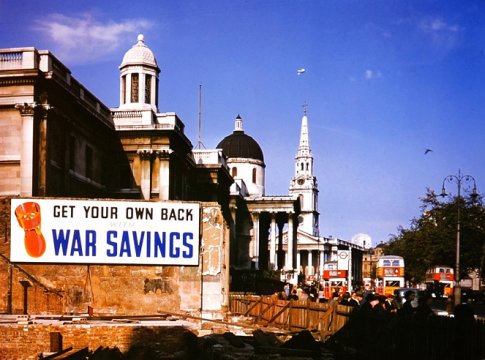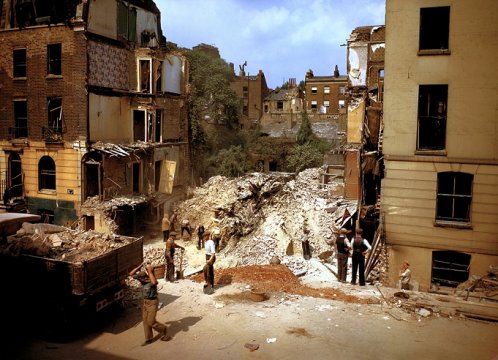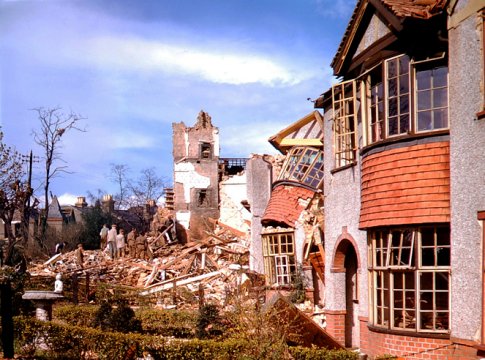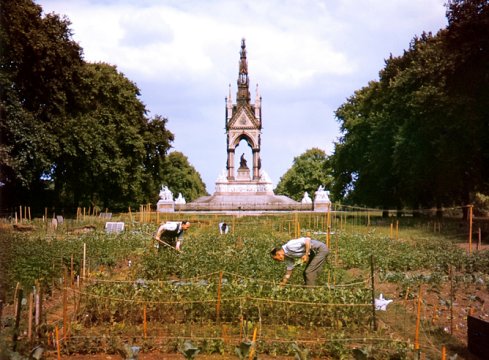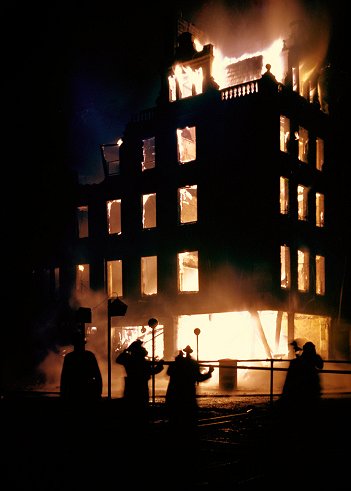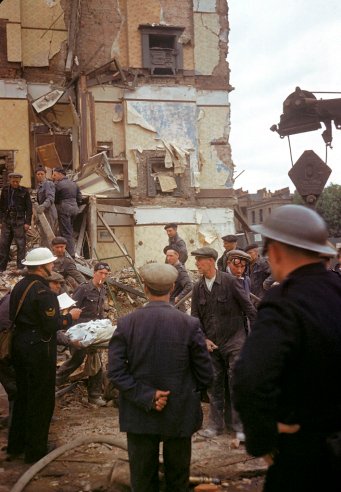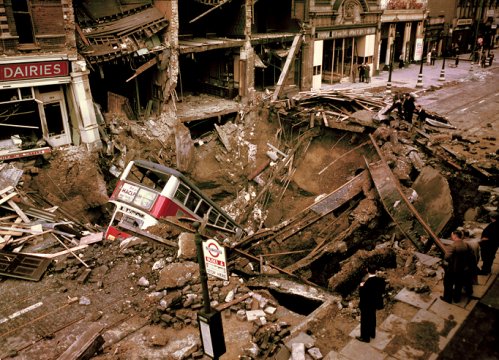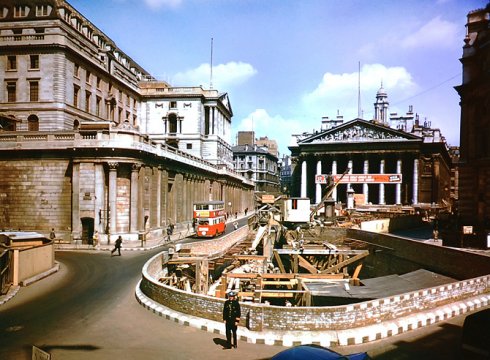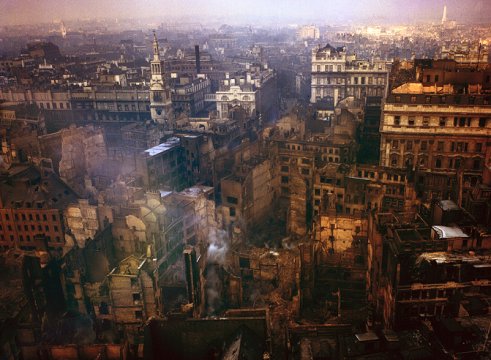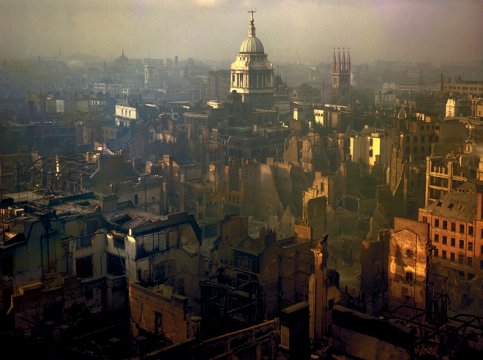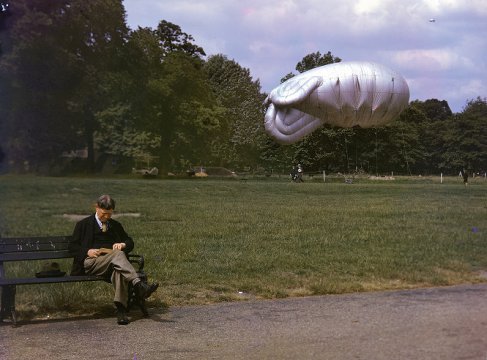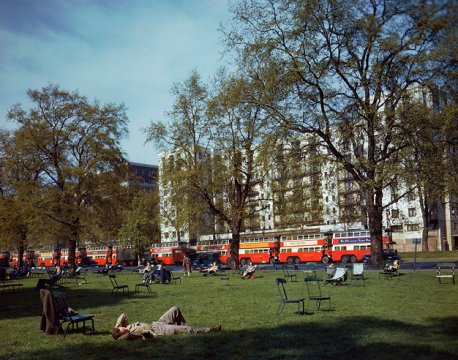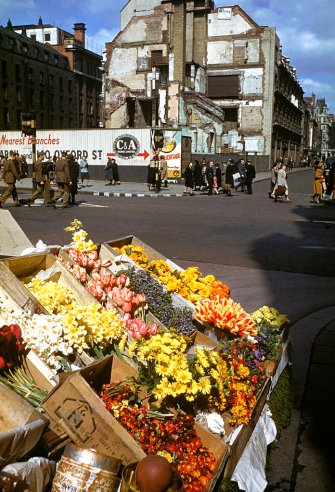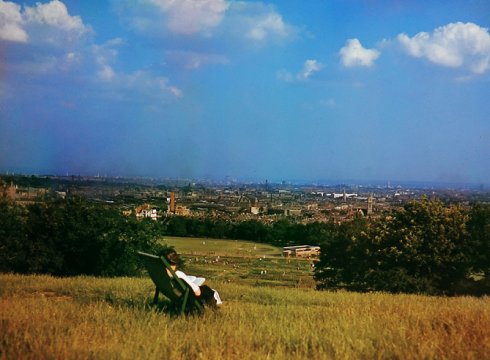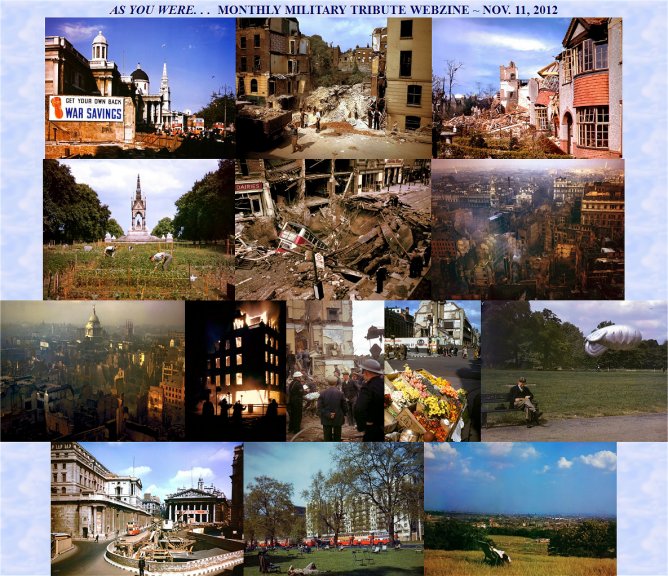The air raids by German Luftwaffe planes on English
cities and towns in 1940 and 1941—attacks known collectively and famously
as the Blitz—were terrifying, but they failed in their key aims: namely,
to demoralize the British people, and to destroy the UK’s war economy.
London, not surprisingly, suffered the brunt of the Blitz: More than a
million London houses were ruined or badly damaged, and more than 20,000
civilians were killed in the city alone. (Roughly 40,000 civilians were
killed in the whole of England.)
These LIFE magazine colour photos were taken in London
during the war, in tribute to the spirit of Britons who would not be cowed.
“These were the times,” Churchill wrote in his war memoirs,
"when the English, and particularly the Londoners, who had the place of
honor, were seen at their best. Grim and gay, dogged and serviceable, with
the confidence of an unconquered people in their bones, they adapted themselves
to this strange new life [of the Blitz], with all its terrors, with all
its jolts and jars.”
“Away across the Atlantic,” Churchill wrote, “the prolonged
bombardment of London, and later of other cities and sea-ports, aroused
a wave of sympathy in the United States, stronger than any ever felt before
or since in the English-speaking world. Passion flamed in American hearts,
and in none more than in the heart of President Roosevelt. I could feel
the glow of millions of men and women eager to share the suffering, burning
to strike a blow. As many Americans as could get passage came, bringing
whatever gifts they could, and their respect, reverence, deep love and
comradeship were very inspiring. However, this was only September, and
we had many months before us of this curious existence.”
“I felt,” Churchill recalled, “with a spasm of mental
pain, a deep sense of the strain and suffering that was being borne throughout
the world’s largest capital city. How long would it go on? How much more
would they have to bear? What were the limits of their vitality? What effects
would their exhaustion have upon our productive war-making power?”
“To the Prussians of modern Berlin,” LIFE wrote in January
1941, at the height of the Blitz, “old London is a hated symbol of all
that makes Englishman superior people. For six months the Nazis bombed
the British capital, by day and by night, without more than denting it.
On the night of December 29, they tried to set fire to it. In that one
night German bombers dropped an estimated 10,000 two-pound incendiary bombs.”
“All the painfully-gathered German experience was expressed
on this occasion,” Churchill wrote of an infamous raid in late December,
1940. “It was an incendiary classic. The weight of the attack was concentrated
upon the City of London itself. It was timed to meet the dead-low-water
hour. The water-mains were broken at the outset by very heavy high-explosive
parachute-mines. Nearly fifteen hundred fires had to be fought. The damage
to railway stations and docks was serious. Eight [Christopher] Wren churches
were destroyed or damaged.”
“The Guildhall was smitten by fire and blast,” Churchill
recalled almost a decade later, in 1949, “and St. Paul’s Cathedral was
only saved by heroic exertions. A void of ruin at the very center of the
British world gapes upon us to this day. But when the King and Queen visited
the scene they were received with enthusiasm far exceeding any Royal festival.”
“The Germans,” wrote LIFE in 1941, before America entered
the war, “are said to be greatly puzzled over London’s willingness to take
continual punishment without so much as a thought to surrender. The British,
they think, are licked and refuse to accept the fact. But the British are
not by any means licked and if, in the end, they win the war it will be
due in no small way to the magnificent way in which the people of London
are standing up to the siege.”
Ref: LIFE Magazine
